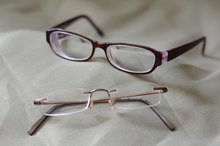Difference Between Cheap Vs. Expensive Golf Drivers
There are many golf drivers on the market today, and often the most obvious difference between drivers is the price. If you search the newer, brand-name drivers can cost hundreds of dollars. However, there are also drivers that cost less than $100. Why this disparity in price? There are a variety of reasons, ranging from materials to design.
Titanium Vs. Steel
Driver heads are either steel or titanium. While titanium provides a larger sweet spot and is lighter than steel, it's also more expensive. Most of the less-expensive drivers have heads made of steel 1. Steel is fine for most recreational golfers, but serious or professional players generally want the advantages of using titanium drivers and are willing to pay extra for them.
- Driver heads are either steel or titanium.
- Most of the less-expensive drivers have heads made of steel 1.
Brand Names Vs. Unknowns
Folic Acid and Bodybuilding
Learn More
As with most consumer products, drivers with well-known, respected brand names cost more. Many golf manufacturers aggressively pursue the top professional players to use their equipment for the purpose of charging amateurs a premium for the same clubs. Does that mean that lesser-known club manufacturers have an inferior product? Not necessarily. However, remember that touring pros choose drivers that allow them to play their best, regardless of the money that companies are willing to pay them.
- As with most consumer products, drivers with well-known, respected brand names cost more.
- Many golf manufacturers aggressively pursue the top professional players to use their equipment for the purpose of charging amateurs a premium for the same clubs.
The Cusp of Technology
One advantage that the larger companies have is the ability to apply new technology to their products on a regular basis. In fact, a portion of the high price you're paying for the brand-name driver supports research and development efforts. Recent years have brought remarkable advancements that give the amateur golfer greater control over shots hit with the driver. Less-expensive drivers are not as likely to offer many of these advancements. More skilled players tend to reap greater benefits from these advancements, while average and below-average golfers might be best served by not spending the extra money to update their golf clubs regularly.
- One advantage that the larger companies have is the ability to apply new technology to their products on a regular basis.
- More skilled players tend to reap greater benefits from these advancements, while average and below-average golfers might be best served by not spending the extra money to update their golf clubs regularly.
Newer Models Vs. Older Models
History of PowerBilt Golf
Learn More
Every year, new models of drivers from all the major manufacturers hit the market. That does not mean that the older models disappear. In fact, there might be many older models still available at a lower price. The technology does not advance so much in one year as to make the previous year's models obsolete. Consequently, you can get a great piece of equipment for a very good price.
- Every year, new models of drivers from all the major manufacturers hit the market.
- In fact, there might be many older models still available at a lower price.
Clones
Some of the cheaper drivers attempt to pattern themselves as closely as possible after one of the expensive drivers on the market. These clubs, called clones, attempt to capitalize on the public's desire for a driver with an expensive look or design 1. Clones might come close to the design of a more expensive driver, but there are no guarantees that if it looks the same, it will perform the same.
Related Articles
References
Writer Bio
Kevin Bliss began his professional writing career in 1994. Since that time he has completed over 15 feature-length screenplays. He has also had articles published in "The Journal of Modern Screenwriting." Bliss received his Bachelor of Arts in English from Arizona State University and his Master of Science in film (with an emphasis on screenwriting) from Boston University.









